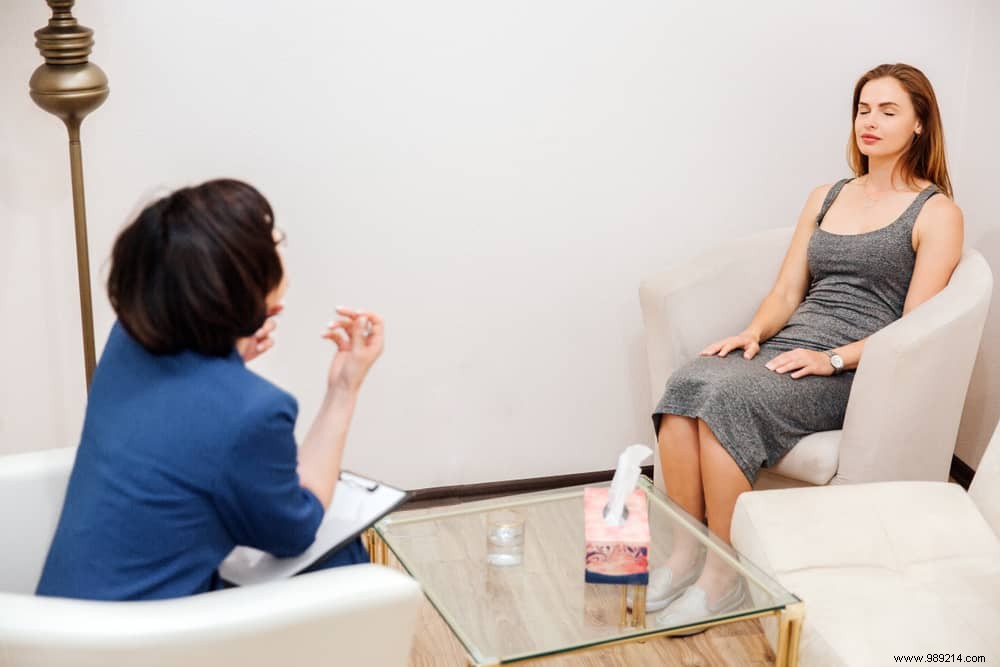
Do you know hypnosis? This state of relaxation, in which the patient is immersed voluntarily. A state so deep that it allows him to explore his subconscious to solve problems related to it. What pathologies or everyday problems can be treated with this technique? How is a session going?
Hypnosis is a therapeutic technique, which also designates the state of consciousness in which the patient finds himself during the sessions. Indeed, during a hypnosis session, the patient is as if asleep:the word "hypnosis" comes from the Greek "hupnoein", which means to fall asleep. To be more precise, it is not strictly speaking a sleep, but rather a kind of trance located between sleep and the waking state.
It is a natural hypnotic state, which we all experience several times during our life (by being absorbed by reading a book, or when we act automatically in the morning for example). The patient is then focused on the voice of the practitioner. In the context of hypnotherapy, this state allows us to access certain areas of the unconscious, where personal problems can have their source.
Psychology and psychoanalysis consider that the unconscious is the key to many ailments, which hypnosis can help to solve.
Two other uses of hypnosis
Hypnosedation:for sedation, this type of hypnosis is used in anesthesia, before an operation. Rather than subjecting the patient to general or local anesthesia, putting them in a hypnotic state can be an alternative solution, as this avoids the risks associated with anesthesia. This technique is used in some university hospitals. Hypnoanalgesia:This type of hypnosis is used as a treatment for pain. It is used in particular to relieve the effects of certain treatments, for pediatric care. The goal is to help the person use their own resources to ward off the pain and be less receptive to it.
A hypnosis session usually lasts between 30 minutes and an hour. The practitioner first proceeds to the hypnotic induction, that is to say the setting in hypnosis. The patient is then both relaxed and receptive. Then comes the suggestion phase, that is to say an exchange with the practitioner, where the latter makes inductions (sentences) to the patient, which will guide him in his subconscious. These inductions vary according to the type of hypnosis (imperative, suggestive sentences, etc.). It is during this phase that the work on psychic disorders is done.
There are several types of hypnosis:
At the end of this phase comes the moment of awakening.
Beware of charlatans!
Before making an appointment, it is important to find out about the practitioner you are visiting. There is a hypnotherapist diploma, which validates the skills of the practitioner. Training in psychology or psychoanalysis can also help guide you. You can consult the directory of therapists on the French Institute of Hypnosis website to find a qualified practitioner. Also take into account the type of hypnosis practiced and the training followed by the therapist, which must be adapted to your problem. In addition to scams, it is also important to be wary of possible physical or moral abuse (manipulation, touching, etc.):a hypnotherapist can in no way force you to do any action against your will.
Hypnosis can help work on issues as varied as:
Hypnosis is considered alternative medicine. Thus, if you consult an approved doctor of sector I or II who practices it, your hypnosis session can be covered by the Health Insurance in part (70%). The remaining charge can be reimbursed by your mutual, depending on the formula you have chosen. However, the session must be part of a coordinated care pathway, for example in the case of smoking cessation.
Mobile apps to learn about hypnosis at home
Hypnos, which is used with a hypnosis mask, is perfect for setting up hypnotherapy sessions at home. The Hypnosis Stop Smoking app is for those who would like to quit smoking using this technique. Finally, HypnoTidoo is aimed at the youngest:this hypnosis app for children is designed to help treat anxiety, sleep disorders, or hyperactivity.
Hypnosis can help in different pathologies. It can be part of an overall treatment, such as complementing nicotine patches for someone who is quitting smoking. The sessions can also help the patient lose weight, in parallel with a follow-up with a nutritionist and a food rebalancing.